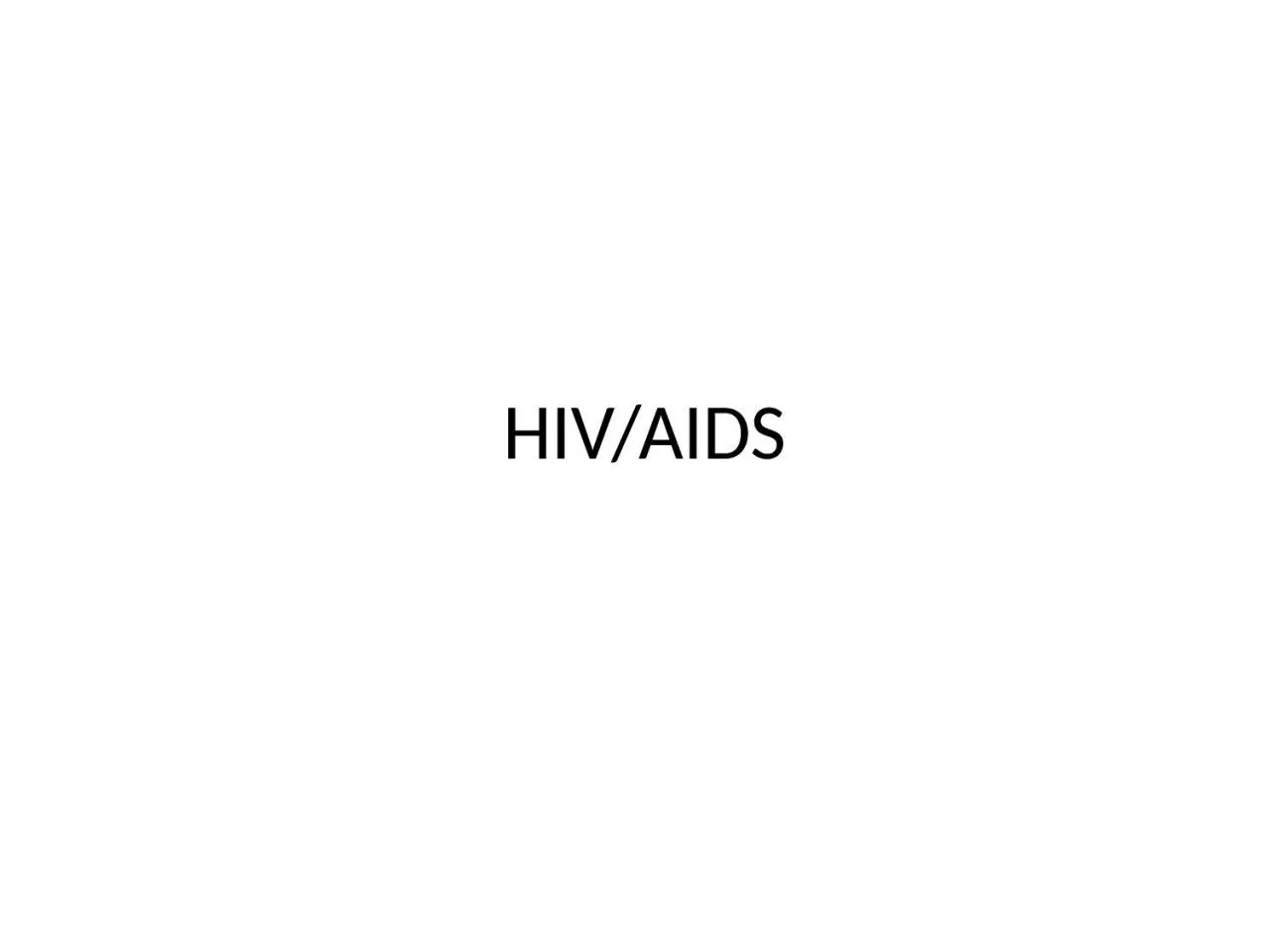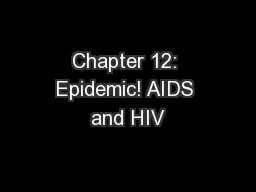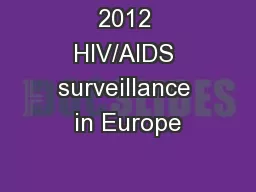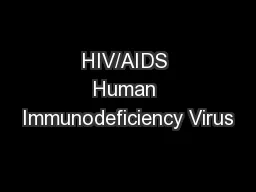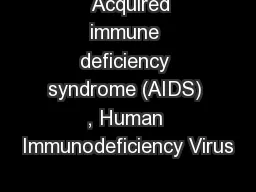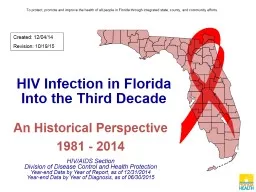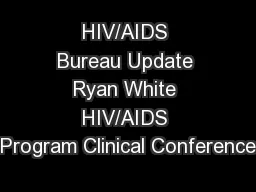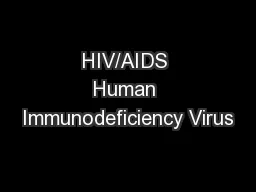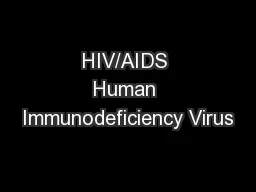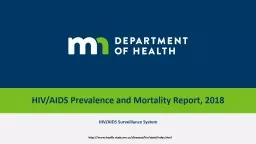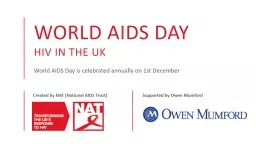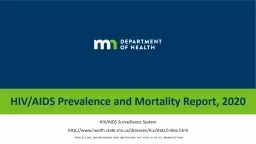PPT-HIV/AIDS HIV There are two types of HIV virus HIV 1 and HIV 2 ,most cases are caused
Author : phoebe | Published Date : 2022-06-18
HIV1 and slower to progress to AIDS Most cases are due to type1 Modes of transmission 1sexual 2 perinatal 3parenteraloccupational and intravenous drug injection
Presentation Embed Code
Download Presentation
Download Presentation The PPT/PDF document "HIV/AIDS HIV There are two types of HIV..." is the property of its rightful owner. Permission is granted to download and print the materials on this website for personal, non-commercial use only, and to display it on your personal computer provided you do not modify the materials and that you retain all copyright notices contained in the materials. By downloading content from our website, you accept the terms of this agreement.
HIV/AIDS HIV There are two types of HIV virus HIV 1 and HIV 2 ,most cases are caused: Transcript
Download Rules Of Document
"HIV/AIDS HIV There are two types of HIV virus HIV 1 and HIV 2 ,most cases are caused"The content belongs to its owner. You may download and print it for personal use, without modification, and keep all copyright notices. By downloading, you agree to these terms.
Related Documents

